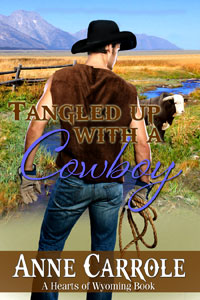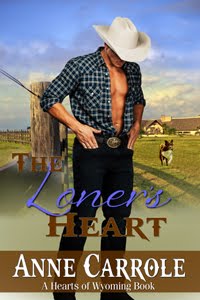Waitressing may not seem an unusual occupation for a
woman these days, but in the late 1800s, a woman who served the public in an establishment most likely would have been a
dance hall girl in a saloon. That changed when Fred Harvey, an Englishman,
began to open up The Harvey Houses along the Santa Fe Railroad line starting in
1878. Harvey was one of the first to employ women of “good character” to serve
the railroad patrons who were traveling west over several days where stopovers
to eat at a respectable and well-ordered establishment were a welcome respite.
With the founding of the Harvey House restaurants, hotels, and resorts, Fred
Harvey and the Santa Fe Railroad also began an experiment in something new for
the Wild West—tourism.
In keeping with the age, Fred Harvey initially
employed men and only men to work in his restaurants. But after a midnight
brawl by waiters at his Raton, New Mexico establishment, Fred Harvey took the
advice of his new manager and hired women because they were less likely “to get
likkered up and go on tears…Those waitresses were the first respectable women
the cowboys had ever seen—that is outside their own wives and mothers. Those
roughnecks learned manners.” (Quoted from Tom Gable as cited in The Harvey Girls: Women Who Opened The West,
by Lesley Poling-Kempes, p.42)
These upstanding waitresses were popular with both
patrons and the community to such an extent that Fred Harvey decided to replace
the waiters in all his restaurants with women. A major obstacle would be
convincing single women of good virtue to venture into the rough and ready
frontier towns filled with saloons and the cowboys, railroad men, and
prostitutes who frequented them.
Fred Harvey sought “women who were well educated (in the 1880s, this meant having completed high school or at least the eighth grade)
and exhibited good manners, clear speech, and neatness in appearance. Vulgarity
of any kind would not be tolerated. Upon acceptance, a young woman usually had
only twenty-four hours to say her goodbyes at home before she began rigorous
training. When a Harvey Girl signed her contract for twelve, nine, or six
months, she agreed to learn the Harvey system, follow instructions to the letter,
obey employee rules, accept whatever locations she was assigned to for work,
and abstain from marriage during the duration of her initial contract.” The Harvey Girls: Women Who Opened The West,
by Lesley Poling Kempes, p. 43
Harvey Girls worked hard, putting in a good day’s labor,
though every account says that Fred Harvey was a fair employer who treated his
staff with respect and care. In most cases, a Harvey girl was required to work
two to three meal shifts a day with just thirty minutes to feed upwards of 50
passengers at a time over eight trains, but there were plenty of staff to make
it happen, from cooks to butchers to busboys and from fifteen to thirty Harvey
Girls per establishment. There was an opportunity for promotion up the ranks and,
on rare occasions, a woman could even become a manager where she would receive
equal pay to a man—something often not true today.
Well aware that in the West, particularly, a
waitress was often thought to be a prostitute as well, Fred Harvey lifted up
waitressing to a professional standard by mandating that these single women
reside in Harvey House dormitories on-premise in “beautiful and well-kept
rooms” under the guardianship of a house mother enforcing a strict curfew. Adhering
to a universal Harvey Girls uniform, a Harvey Girl presented the picture of
virtue with no make-up allowed and starched black and white skirts and bibs and
aprons with hems no more than eight inches from the floor. Enforcing high
standards assured the public that these were women of good moral character to
be treated with the respect due to a lady.
Thousands of women applied during the Harvey House
period spanning 1883 until the 1950s. Here was an opportunity for independence previously
unavailable to women, with the exception of becoming a teacher.
Harvey Girls were paid an average of “$17.50/month”
with free room and board and railroad passes. Compare this to the cowboy at the time who generally earned about $30/month
with keep. Still, for a woman, these
were considered good wages in a protected environment with the added bonus of
adventure and, possibly, a marriage proposal. Minnie O’Neal became a Harvey
Girl around 1885 in Raton, New Mexico, and ended up married to the ranch foreman
of Senator Stephen Dorsey’s ranch. Her experience was not uncommon. “It is
estimated that more than 100,000 girls worked for Harvey House restaurants and
hotels and of those, 20,000 married their regular customers.”-
http://www.florenceks.com/text/local/local_hh-girls.htm
Fred Harvey worked with farming schedules, allowing
time off during summer months to those who were needed on the farm and replacing
them temporarily with teachers who needed work during summer months.
Particularly in later years and through the depression, The Harvey Houses were
known to help employees, including women, obtain a college education in the
communities that had colleges or universities, by providing accommodating
schedules for those who wished to attend classes.
The Harvey Girls were immortalized in Sam Adams’
book of the same name and romanticized in the MGM movie starring Judy Garland
where there was much singing and dancing but not as much hard work depicted as
reality would suggest. The romance, however, appears to have been true. For
those of you who have never seen the movie or would like a quick jog down
memory lane, here is the movie trailer: https://youtu.be/xIEzMBEOkAc
The story of the Harvey Girls is one more example of
women making their way out west for a new life in a role unthinkable at the
time in eastern environs. As Will Rogers, an enthusiastic and loyal Harvey
House customer, said: “In the early days, the traveler fed on the buffalo. For
doing so, the buffalo got his picture on the nickel. Well, Fred Harvey should
have his picture on the one side of a dime, and one of his waitresses with her
arms full of delicious ham and eggs on the other side, ‘cause they have kept
the West supplied with food and wives.” (Quoted in The
Harvey Girls: Women Who Opened the West by Lesley Poling Kempes, p. 102)
Besides Lesley Poling Kempes book referenced above, another good book about the Fred Harvey Company is Appetite for America by Stephen Fried.
Besides Lesley Poling Kempes book referenced above, another good book about the Fred Harvey Company is Appetite for America by Stephen Fried.
My novella, WHEN LOVES COMES CALLING, is about the amorous
adventure of a young woman who has become a Harvey Girl in 1884 Colorado just as the Fred Harvey Company was beginning to employ women as waitresses.
1884
Colorado
Working as a
waitress at a Harvey House Restaurant out west has been a lifesaver for
homeless Callie Rhinehart, literally. The position has provided a roof over her
head, the security of decent pay, and a career with a reputable company after
the death of her parents and sister. When handsome widow Frank Sutton sits at
her counter with a sweet little boy in need of a mother, Callie’s carefully
laid plans are threatened. But despite her growing feelings for the rancher, should
she give up the security and independence afforded by the Harvey Company and
risk a marriage of mere convenience to a temptingly handsome stranger?
It’s true that Frank originally pursued Callie
because he needed a mother for his child, but he’s fallen in love with her
independent spirit. Competing
with another man for her affections is one thing, competing with the Harvey Company
is proving to be quite another.






























